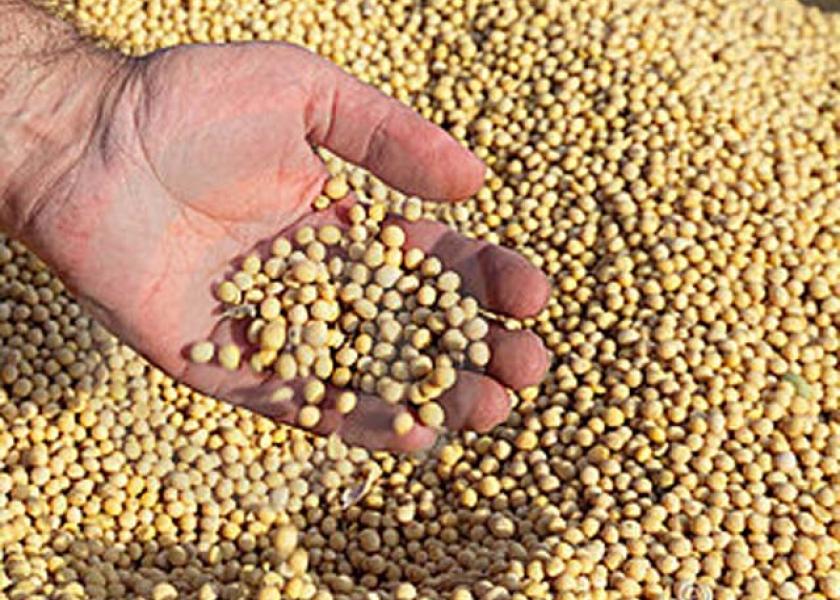Adding Value to Soybeans Through Cattle

Does feeding whole soybeans to growing or finishing cattle make economic sense? In nearly all cases the answer has been a clear “No”, especially with the widespread adoption of distillers grains as a source of supplemental protein for cattle diets.
However, changing market conditions sometimes result in “rules” that no longer apply. The market environment for soybeans looks to be dramatically different across the U.S. and particularly in the Northern Plains. Basis levels much wider than normal and concerns about the ability to deliver soybeans in a timely manner have caused some to wonder if feeding whole soybeans to cattle is a viable strategy.
Whole soybeans are an excellent source of protein (about 40% on a dry basis) and fit into a cattle diet as a source of protein and as energy. For most cattle feeders the cost effectiveness of soybeans depends on the prices of distillers and corn. Table 1 shows the effect of varying prices of distillers on the value of soybeans in a cattle diet considering both the value of the protein and energy components of whole soybeans.
Table 1. Breakeven soybean prices at different DDGS values.
|
|
|||
| $100 | $125 | $150 | |
| Corn Price |
|
||
| $2.75 | $3.17 | $3.83 | $4.90 |
The breakeven soybean prices in this example are less than what is currently being offered in the marketplace showing the clear cost advantage for feeding corn and corn-based byproducts. Even at the low current prices for soybeans farmer feeders would be ahead to rely on DGS and corn for their cattle feed and either sell or store soybeans for a (hopefully) better price later.
There may be circumstances where feeding the beans is still the best (or least bad) option. For instance, soybeans that aren’t marketable because of frost damage or other quality factors could be fed to livestock as a way to capture otherwise lost value. There also could be cases in certain locations where marketing channels become so congested that cash bids dry up and storage options become so limited that feeding soybeans may be a strategy to move the crop and avoid cash outlays for purchased feeds.
The amount of soybeans that can be fed to cattle is limited due to their high fat content. Based on SDSU research, the amount of whole soybeans for cattle should be limited to 14% of diet dry matter to reduce the negative effects of the oil on fiber digestibility and nitrogen utilization. That represents about 2 pounds per head for growing calves and about 3 to 4 pounds for finishing cattle consuming greater quantities of feed.
Avoid feeding raw soybeans to very young, pre-ruminating calves because of trypsin inhibitor which interferes with digestion in monogastrics. Soybeans also contain urease which breaks down urea into ammonia. Feeding raw soybeans along with protein supplements containing urea (such as lick tubs, protein blocks, and some liquid or dry supplements) could result in ammonia toxicity and cattle death.
These two obstacles can be overcome by heat treating soybeans by through either extrusion or roasting which inactivates both enzymes. Heat treatment also increases the amount of ruminally undegradable protein (RUP). Increased RUP has been associated with improved performance, particularly on more productive classes of livestock such as young, fast-growing cattle.
Feeding whole soybeans to cattle is an option to market a portion of a soybean crop in an otherwise challenging year. Cattle producers need to weigh the costs and use limitations carefully to determine if this option makes sense in their operation.







